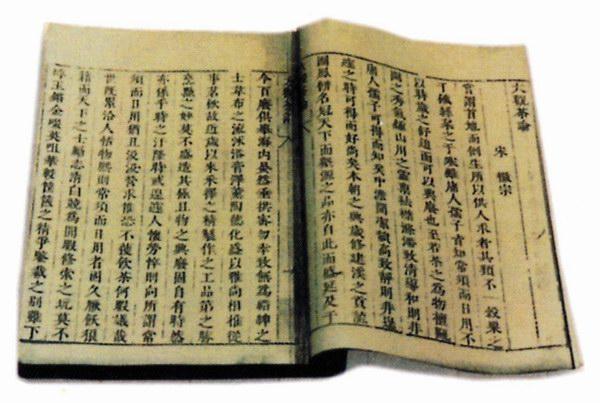Ancient Chinese tea study and technology, mainly collected in tea books, and expressed through tea books. Ancient tea studies began with the writing of "Tea Classics" by Lu Yu, and reached a peak in the middle of the Ming Dynasty through the development of the Tang and Song Dynasties. In the late Qing Dynasty, ancient Chinese tea books rarely saw new works, and traditional tea studies came to a stage of static change. Therefore, if the beginning of the Ming Dynasty and the early Qing Dynasty was a prosperous period or peak of Chinese traditional tea study, then, after the late Qing Dynasty, Chinese traditional tea study gradually went to the ultimate.

The writings of Chinese ancient tea books are: 7 tea books in the Tang Dynasty; 25 tea books in the Song Dynasty; there are no special tea books in the Yuan Dynasty; 55 tea books in the Ming Dynasty; 11 tea books in the Qing Dynasty, in total of 98 tea books. The number of the tea books cannot be said to be quite complete (according to statistics, there are nearly 30 tea books not listed in). The more tea books of dynasty, the more omissions are generally.

From the perspective of tea book writing, Chinese traditional tea study is a high bee in the Ming and Qing Dynasties. The period of its most development is actually only from the time of 1465 to 1735 AD. After that time, perhaps the ancient Chinese tea and tea production techniques have been repeatedly described or narrative for the Ming and Qing dynasties. So, until the Qing Dynasty was over, there was basically no new tea book published. Of course, the large number of teas in the middle Ming Dynasty had a certain relationship with the development of social commodity economy at that time, but it was always a reflection of the development of tea study and even formed a peak of the development of traditional Chinese tea study.

In addition, in mastering the biological characteristics of tea trees and tea plucking, it has also been greatly improved and developed in the Ming and Qing Dynasties. The development of these aspects constitutes the basic content and level of tea study in this period. Modern tea study and technology was established and developed in the last century, especially in the late last century, on the basis of Chinese traditional tea study. Therefore, from this point of view, although tea culture techniques in the Ming and Qing Dynasties are a bit naive, but they do represent the technical height of traditional Chinese tea study and represent the the highest level of tea study and technology of China and the world at that time.